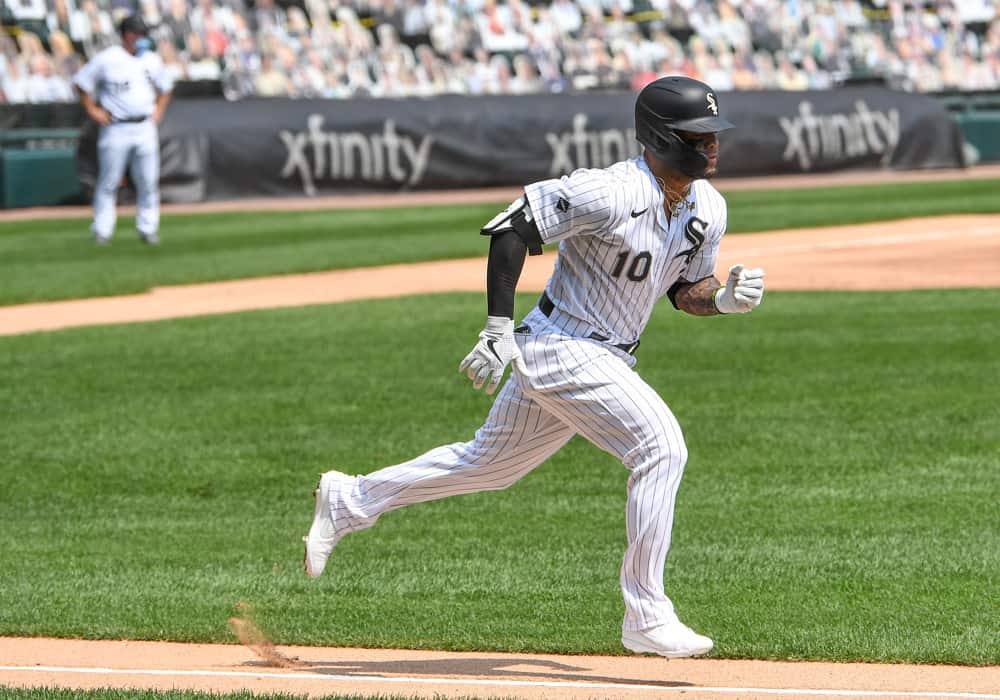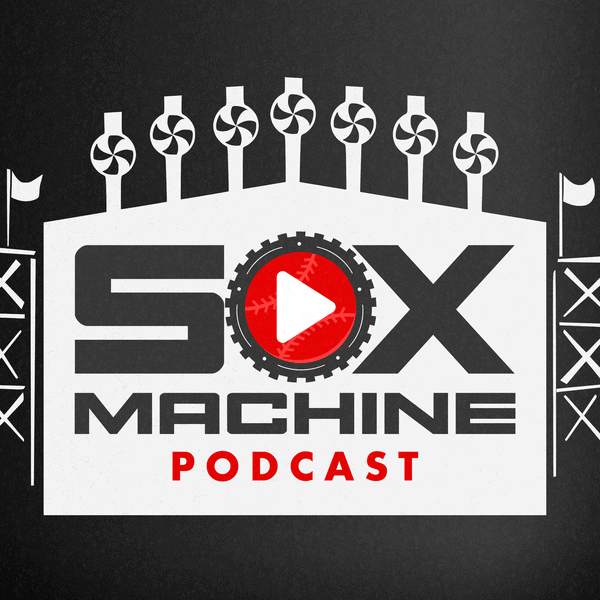Yoán Moncada's battle with COVID-19 wasn't just unrelenting and unpredictable -- it was also unresolved. The efforts to manage his visible fatigue ultimately paid off with experience and reps, but not so much in production. He couldn't deliver the encore everybody hoped would follow his breakout 2019 campaign. He also couldn't provide a clear idea of whether the aftereffects of the coronavirus would follow him into 2021.
After months of rest, Moncada finally offered an enouraging answer to James Fegan. There's still a little risk that Moncada's assessment is more snapshot than stable given the virus' unpredictable nature, but Moncada sounds like his body is finally as ready as his mind to put everything behind him:
“I took time to rest and feel better and I think that is what helped me to feel like I feel right now,” Moncada said. “I feel strong. The strength was something I didn’t feel during the last season.” [...]
“I fully believe that I can do more, that I can be better than what I was in 2019,” Moncada said. “That’s why I’m working hard. That’s why I have a mindset to do the best that I can every day and that is why I’m working with a goal, with a purpose, because I know that I can do much better than what I did in 2019.”
Fegan pointed out that Moncada didn't refer to the wrong last year, as so many are prone to do in early January. Improving upon that 5-WAR year feels greedy given the obstacles he battled in 2020, but it's also not out of the question. Even if you thought his strikeout rate might prevent him from raising his ceiling offensively, he still had plenty of room for improvement in terms of durability and defense. COVID-19 affected the first of those, but he still made strides with the latter, improving across the board in metrics and earning a Gold Glove finalist nod for his effort.
| Metric | 2019 | 2020* |
|---|---|---|
| DRS | -4 | -2.7 |
| UZR | 4.3 | 9.7 |
| OOA | 4 | 8 |
That improvement buoyed his value, which otherwise could have taken a hit because he he struggled to get the bat through the zone with conviction (.225/.320/.385). Holding his gains defensively while recovering even most of his offense makes him easily the most projectable White Sox. If Moncada were somehow able to meet his preseason goal with career bests at the plate in 2021, that's somebody who might take a run at Mike Trout.
* * * * * * * * *
Because the White Sox made the postseason despite Moncada's struggles, they can kinda regard him as a secret weapon of sorts. I hedge with "kinda" because he's not really a secret, and the White Sox have lulled themselves into complacency by treating guys like Carlos Rodón and Nate Jones as midseason upgrades that ultimately never delivered.
Fingers crossed, COVID-19 was a prolonged but unrepeatable occurrence for Moncada, differentiating him from the aforementioned pitchers buried under an avalanche of injuries and surgeries. He's also different because he managed to contribute despite his compromised state. When you look at the White Sox's production by position, third base blends in. The idea is that Moncada isn't supposed to blend in, but given the underlying cause, the Sox could have fared worse. Right field and DH are right there as evidence.
| POS | PA | 2B | 3B | HR | BA | OBP | SLG | wRC+ |
|---|---|---|---|---|---|---|---|---|
| C | 252 | 9 | 0 | 14 | .278 | .381 | .519 | 119 |
| 1B | 262 | 16 | 0 | 17 | .314 | .370 | .594 | 167 |
| 2B | 227 | 7 | 1 | 6 | .302 | .344 | .429 | 99 |
| 3B | 264 | 11 | 3 | 6 | .215 | .314 | .368 | 106 |
| SS | 270 | 12 | 1 | 11 | .315 | .352 | .500 | 135 |
| LF | 248 | 15 | 0 | 15 | .305 | .343 | .562 | 126 |
| CF | 243 | 9 | 0 | 11 | .227 | .296 | .421 | 102 |
| RF | 229 | 9 | 1 | 3 | .230 | .284 | .324 | 82 |
| DH | 253 | 6 | 0 | 13 | .148 | .238 | .350 | 57 |
What's encouraging is that the White Sox didn't need the best of Moncada to function as a unit. The offense finished first in homers, and second in runs, batting average and OPS. Moncada's bat speed was sapped by COVID-19, but even that had a useful byproduct of increasing his walk rate to 12 percent, which at least contributed traffic to the basepaths.
Still, knowing the White Sox missed out on what Moncada hoped would be a monster year, it made me greedy. What would it look like if Moncada cemented his 2019 standards at the same time of so many other breakthroughs? Here's how that production looks in 2020's lineup after prorating them for a 60-game schedule.
| POS | PA | 2B | 3B | HR | BA | OBP | SLG | wRC+ |
|---|---|---|---|---|---|---|---|---|
| C | 252 | 9 | 0 | 14 | .278 | .381 | .519 | 119 |
| 1B | 262 | 16 | 0 | 17 | .314 | .370 | .594 | 167 |
| 2B | 227 | 7 | 1 | 6 | .302 | .344 | .429 | 99 |
| 3B | 267 | 15 | 2 | 10 | .301 | .360 | .504 | 128 |
| SS | 270 | 12 | 1 | 11 | .315 | .352 | .500 | 135 |
| LF | 248 | 15 | 0 | 15 | .305 | .343 | .562 | 126 |
| CF | 243 | 9 | 0 | 11 | .227 | .296 | .421 | 102 |
| RF | 229 | 9 | 1 | 3 | .230 | .284 | .324 | 82 |
| DH | 253 | 6 | 0 | 13 | .148 | .238 | .350 | 57 |
The difference between 2020's actual production and 2019's prorated production is about 11 Weighted Runs Created, which is pretty close to the gap in RBI (nine) plus runs (four) from the position year over year. So let's use that to take a stab at how a fully functional Moncada could have boosted an offense that was already turbocharged for much of the season.
| Category | 2019 | 2020 |
| BA | .261 (2) | .270 (1) |
| OBP | .326 (5) | .330 (3) |
| SLG | .453 (1) | .469 (1) |
| OPS+ | .779 (2) | .799 (1) |
| Runs/game | 5.1 (2) | 5.3 (1) |
There are a whole host of reasons these specific values might fail under basic scrutiny -- standard butterfly effect stuff, an unequal amount of chances even after prorating, a whole different schedule and competition -- but the bigger errors seem to sit on the conservative side. Besides the fact that some of Moncada's superior 2019 counting stats would be bolstered by better hitters around him, making him a potentially bigger figure in runs scored, he also would've helped offset the White Sox's acute issues against right-handed pitching.
Here are Moncada's lines against right-handed pitching year-over-year:
- 2019: .322/.377/.569
- 2020: .226/.308/.396
And here's what 2019's line would have added to the White Sox's team performance against righties:
- 2020 w/Moncada's 2020: .254/.315/.434
- 2020 w/Moncada's 2019: .263/.320/.449
The White Sox were fine against all right-handed pitching, but the general lack of plate discipline leaves the lineup vulnerable against right-handed pitching that kills same-sided hitting. That came to a head in the postseason series against Oakland, where Chris Bassitt essentially had five scoreless innings to redeem because he could throw pitches with movement from a three-quarter slot (he ended up throwing seven of 'em).
These numbers are all but a thought experiment, but a telling one. If 2019 Moncada could markedly improve even an offense as capable as the 2020 White Sox version, then it would be just as effective in helping a 2021 team absorb some setbacks. José Abreu probably isn't winning the MVP again, the next backup catcher won't hit like James McCann, Luis Robert looks likely to run hot and cold for the foreseeable future, and everybody will have to face pitching tougher than what the Central divisions provided last year.
The Sox aren't staring down the barrel of regression, though. They have multiple ways to make gains thanks to the youth of their hitters , and they should have the resources to add more than Adam Eaton. But even if Rick Hahn finds a DH and bench bat to provide depth, Moncada offers the potential to deliver a more jarring improvement than any outside solution, so it's outstanding to hear that he's physically capable of getting ready for it.
(Photo by Nick Wosika/Icon Sportswire)






